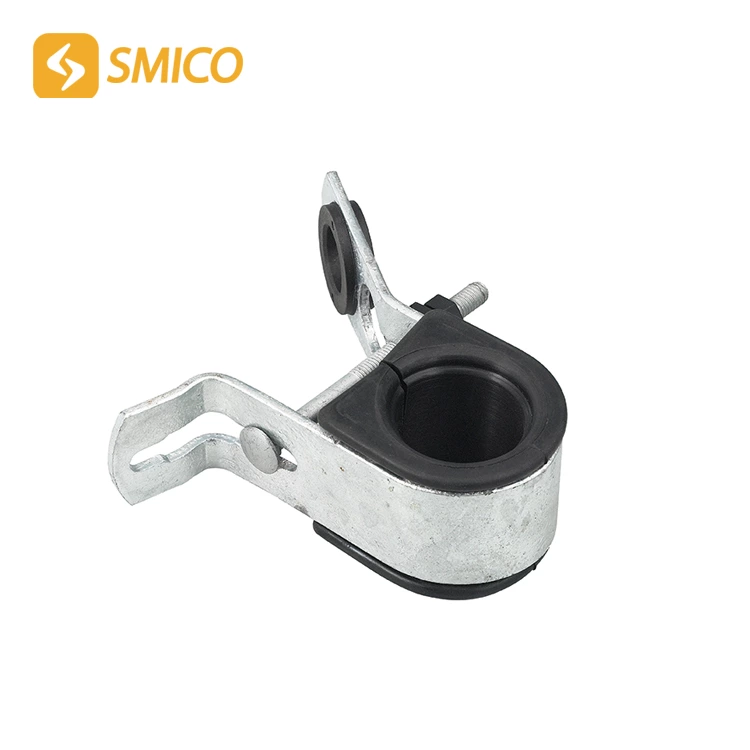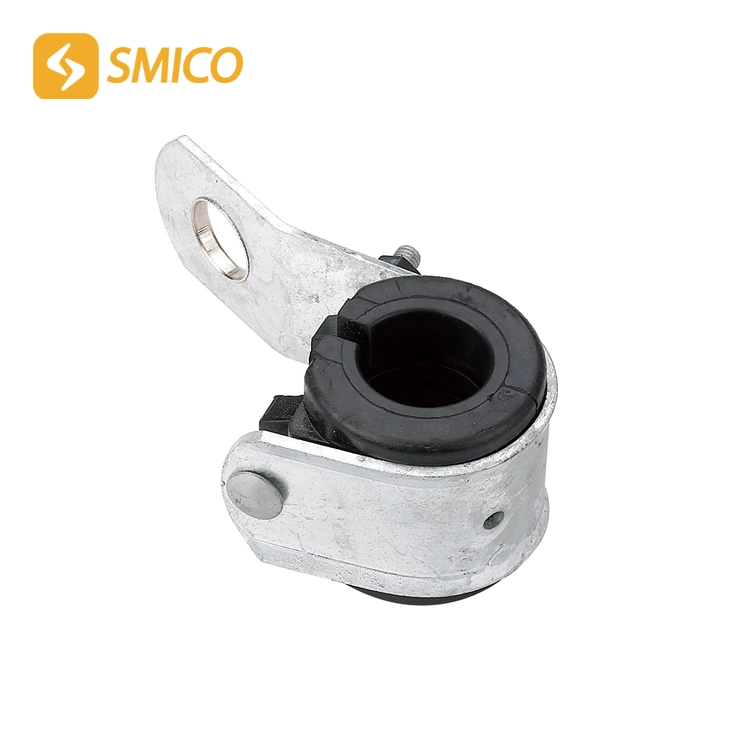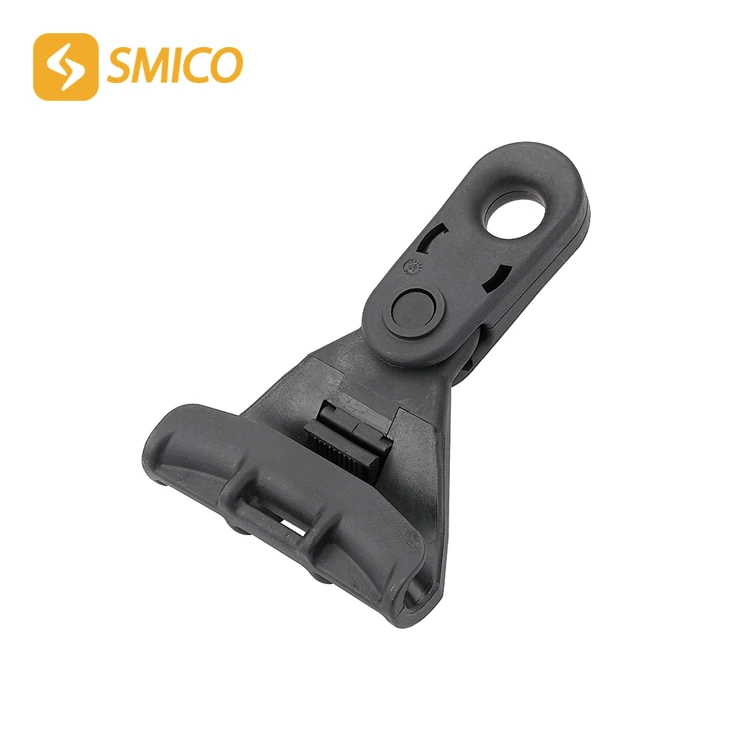SHC-2 LV overhead line cable suspension clamp
- Conductor Range:
- 4X(50-120)mm²
- Standard:
- NFC 33-042; EN 50-483
- Supply Ability:
- 400000/month
- Color:
- Black or customized
SHC-2 LV overhead line cable suspension clamp
General Description:
The SMICO suspension clamps are designed to hang LV-ABC lines with insulated neutral messengers. The neutral messenger is fixed by an adjustable grip device. A movable link allows longitudinal and transversal movement of the clamp body.
Standard suspensiocm clamp version ES is supplied with preinstalled bracket. The upper bulge of the bracket prevents the clamp from turning over the bracket.
Suspension Clamps are also available without bracket and with a fuse link. These suspension clamps are fixed to a pole with a pig tail hook or bracket.
• Toolfree installation
• No loosable parts
• Suspension Clamp and link made of polymer giving an additional insulation between the cable and the pole.
• Exceeds requirements according to NF C 33 040, EN50483
• Suspension Clamp and movable link made of weather and UV resistant glass fibre reinforced polymer
• Universal fixing of bracket by 1 bolt M16 or stainless steel strap of 20x0,7 mm.
• Bracket made of corrosion resistant
| Model | Conductor Range (mm2) |
| SM94 | 16-95 |
| SM95 | 16-95 |
| 1.1A | 16-95 |
| 1.1B | 16-95 |
| ES54-14 | 16-95 |
| PS1500 | 16-95 |
| SHC-1 | 4×(16-35) |
| SHC-2 | 4×(50-120) |
| SHC-3 | 4×(50-70) |
| SHC-4 | 4×(50-70) |
| SHC-5 | 4×(70-95) |
| SHC-6 | 4×(70-95) |

What is a Suspension Clamp?
A suspension clamp is a fitting that is designed for suspending or hanging cables or conductors to the pole. In other cases, the clamp can suspend cables to the tower.
Since the cable is directly connected to the conductor, its specifications need to match with that of the cable so as to create a perfect connection.
A suspension clamp hangs the cables at different points and angles depending on the requirements of the project.
What are the Uses and Applications of a Suspension Clamp?
While the primary use of suspension clamp is to suspend hang or suspend a conductor, there are other roles that it plays.
A suspension clamp protects the conductor during the installation of the transmission line onto the pole.
The clamp also provides a mechanical connection by ensuring that there the right longitudinal grip on the transmission line.
Suspension clamps also control the movement of cables against external forces such as wind and storm.
From the above listed uses, suspension clamp is applicable in different projects that have conductors hanging from poles.
The most common applications are electrical pole overhead lines and telephone transmission lines.
Parts and Components of Suspension Clamp
From a distance, you can easily assume that a suspension clamp is a single homogeneous accessory. The truth of the matter is a suspension clamp comprises of different parts which include:
1. The Body
The body is the supporting frame of a suspension clamp for the conductor. It supports the whole fitting.
The body is made of aluminium alloy which apart from being strong is also resistant to scratches and corrosion.
2. Keeper
The keeper of a suspension clamp plays the role of connecting the conductor of a transmission line to the body of the suspension clamp.
3. Straps
These are string-like structures that are responsible for transferring the load from the axis of oscillation straight to the insulator string.
These straps are capable of playing this role because they are made of coated zinc material.
4. Washers
The washers of a suspension clamp are usually put into use when the clamping surface is not rested perpendicularly.
They are made of steel to provide the necessary support while at the same time resist corrosion.
5. Bolts and Nuts
Since a suspension clamp is also a mechanical device, there will always be a need to secure all the connections.
This is where the role of bolts and nuts come into play. Any connection that is made to a suspension clamp is completed using bolts and nuts.
Bolts and nuts are also made of steel for strength and resist corrosion.
6. Threaded Inserts
When you see threads or bushings on a device, the first thing that should come into your mind is the device needs to be fastened.
The threaded inserts of a suspension clamp are simply fastening elements. They are inserted to elements that have threaded holes to complete the connection.
Threaded inserts are also made of stainless steel.
Mechanical Requirements of Suspension Clamp
The mechanical requirements of the suspension clamp for the conductor define the operability of the suspension clamp.
How does a clamp operate or behave after it has finally been installed?
One of the most basic mechanical requirements is the suspension clamp should be able to withstand deformation load without snapping or undergoing physical damage.
Also, the clamp should sustain the force of bolts and nuts when they are being tightened.





